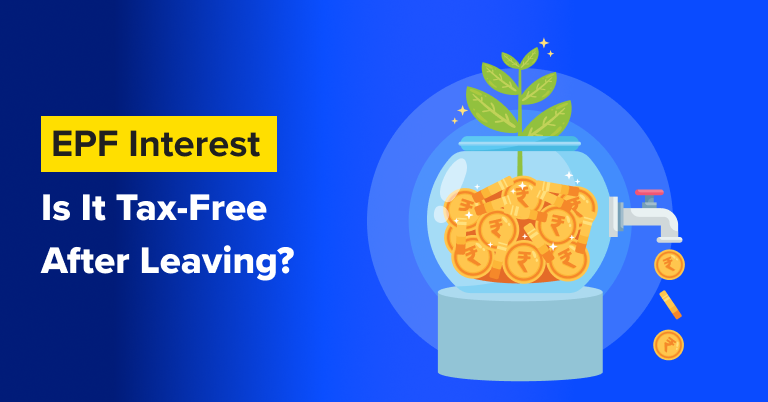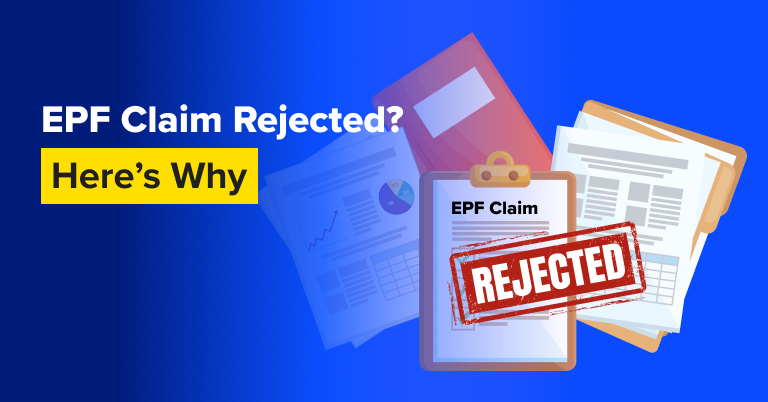The Employees’ Provident Fund (EPF) is a savings scheme designed to help salaried employees accumulate a retirement corpus. Under this scheme, both the employer and employee contribute 12% of the employee’s basic salary (including dearness allowance) towards the EPF account. This amount earns an annual interest of 8.15%, making it a secure way to save for the future. One of the key benefits of EPF is that the interest earned on contributions is tax-free, subject to certain conditions, and can be withdrawn tax-free at the time of retirement.
Upon retirement, employees receive a lump sum, which includes the accumulated contributions and the accrued interest. This offers financial security during post-retirement years.
Accessing EPF Information Online
For those eligible for the EPF scheme, accessing and managing your EPF account is straightforward through the EPFO portal. The platform allows you to monitor your contributions, check balances, and even plan financial goals more effectively. The portal provides transparency and hassle-free transactions, making it easier to stay updated on your EPF savings.
Key Schemes Offered by EPFO
The Employees’ Provident Fund Organisation (EPFO) was established in 1951 and operates under the Ministry of Labour and Employment, Government of India. The EPFO is responsible for managing several schemes that promote employee savings for retirement. Below are the main schemes under EPFO:
- Employees’ Provident Fund (EPF) Scheme (1952): The core savings plan for retirement.
- Employees’ Deposit Linked Insurance (EDLI) Scheme (1976): Provides life insurance cover to employees.
- Employees’ Pension Scheme (EPS) (1995): Ensures a regular pension for employees post-retirement.
For more information on each scheme, you can visit the official EPFO website 🔗
Objectives of EPFO
The EPFO was established with the following key objectives:
- To ensure that every employee has only one EPF account throughout their career.
- To simplify compliance for employees and employers.
- To ensure all companies and organizations adhere to EPFO rules and regulations.
- To make EPF account details easily accessible online.
- To reduce the claim settlement period from 20 days to just 3 days.
- To encourage voluntary compliance by employers.
EPFO Portal and UAN
Employees who are part of the EPF scheme can access their accounts online via the EPFO portal. Each EPF member is assigned a Universal Account Number (UAN), a 12-digit unique identifier that remains the same even when an employee switches employers.
The UAN plays a crucial role in accessing the EPF portal, and streamlining processes such as checking balances and transferring accounts. When an employee changes jobs, their UAN remains constant, although the member ID may change. However, for smooth operations on the portal, it is important to activate the UAN after receiving it.
Who is Eligible for the EPF Scheme?
To be eligible for the EPF scheme, certain criteria must be met:
1. Organizational Requirements: Any company with 20 or more employees is required to offer the EPF scheme to its workforce.
2. Eligibility of Employees: The EPF scheme is available to all Indian employees, both in the private and public sectors.
3. Employee Benefits: Once an employee becomes a member of the EPF, they gain access to additional benefits such as pension and insurance, as provided under the various EPFO schemes.
EPF Interest and Taxation
For the financial year 2023-2024, the interest rate for EPF accounts is set at 8.15% per annum. This interest is credited to the employee’s account at the end of the financial year.
In terms of taxation:
- Tax-Free Maturity: If an employee maintains their EPF account until retirement, the entire maturity amount is exempt from tax.
- TDS on Early Withdrawal: If an employee withdraws EPF funds before completing five years of continuous service, Tax Deducted at Source (TDS) is applicable. However, no TDS is charged if the withdrawal amount is less than ₹50,000.
Additionally, any interest earned on the employee’s contribution up to ₹2.5 lakh per annum is tax-free. If the amount exceeds ₹2.5 lakh, it becomes taxable according to the employee’s tax slab. This threshold increases to ₹5 lakh if the employer does not contribute to the EPF.
For easy calculation of interest and taxation on EPF contributions, employees can use an online EPF calculator, which takes into account the retirement age of 58 years.
Other Important Information About EPF
When managing an EPF account, there are several key points employees should be aware of:
- EPF Forms: Different forms are required for various actions on the EPFO portal. For example, Form 2 is used to nominate a person, while Form 5 is for registration.
- EPF Transfer: Employees can transfer their EPF balance when switching jobs via their UAN, ensuring seamless continuity of their savings.
Track Your Provident Fund (PF) Account with MobiKwik App
The MobiKwik App offers a convenient feature that allows users to easily track their Provident Fund (PF) account using their UAN number. With this feature, users can monitor their monthly PF contributions and the interest earned, all within the app. It simplifies the process of staying updated on your retirement savings, providing real-time insights into the PF account balance and credit history. This makes it easy for employees to manage their financial planning and keep track of their long-term savings effortlessly through MobiKwik.
Conclusion
The EPF scheme offers numerous benefits to salaried employees, serving as a valuable component of retirement planning. While it may not be the sole source of retirement savings, it provides tax advantages, ensures disciplined savings, and allows for easy withdrawals in times of need. Additionally, with the EPFO portal’s user-friendly interface, managing your EPF account is more convenient than ever.
Make sure to take full advantage of the scheme to secure your financial future.



